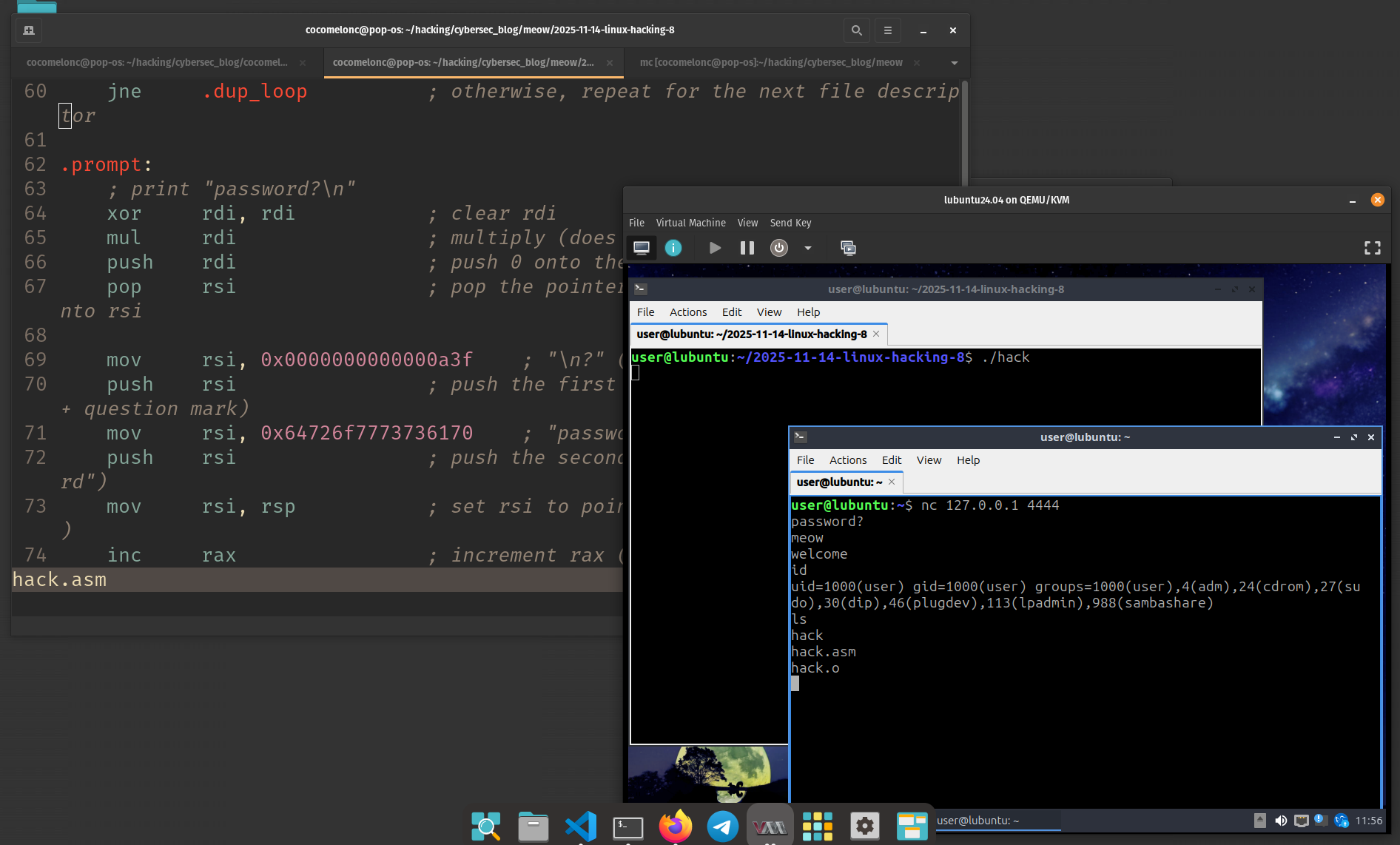Windows API hooking part 2. Simple C++ example.
﷽
Hello, cybersecurity enthusiasts and white hackers!

what is API hooking?
API hooking is a technique by which we can instrument and modify the behaviour and flow of API calls. This technique is also used by many AV solutions to detect if code is malicious.
The easiest way of hooking is by inserting a jump instruction. In this post I will show you another technique.
This method is six bytes in total, and looks like the following.
The push instruction pushes a 32bit value on the stack, and the retn instruction pops a 32bit address off the stack into the Instruction Pointer (in other words, it starts execution at the address which is found at the top of the stack.)
example 1
Let’s look at an example. In this case I can hook a function WinExec from kernel32.dll (hooking.cpp):
/*
hooking.cpp
basic hooking example with push/retn method
author: @cocomelonc
https://cocomelonc.github.io/tutorial/2022/03/08/basic-hooking-2.html
*/
#include <windows.h>
// buffer for saving original bytes
char originalBytes[6];
FARPROC hookedAddress;
// we will jump to after the hook has been installed
int __stdcall myFunc(LPCSTR lpCmdLine, UINT uCmdShow) {
WriteProcessMemory(GetCurrentProcess(), (LPVOID)hookedAddress, originalBytes, 6, NULL);
return WinExec("mspaint", uCmdShow);
}
// hooking logic
void setMySuperHook() {
HINSTANCE hLib;
VOID *myFuncAddress;
DWORD *rOffset;
DWORD *hookAddress;
DWORD src;
DWORD dst;
CHAR patch[6]= {0};
// get memory address of function WinExec
hLib = LoadLibraryA("kernel32.dll");
hookedAddress = GetProcAddress(hLib, "WinExec");
// save the first 6 bytes into originalBytes (buffer)
ReadProcessMemory(GetCurrentProcess(), (LPCVOID) hookedAddress, originalBytes, 6, NULL);
// overwrite the first 6 bytes with a jump to myFunc
myFuncAddress = &myFunc;
// create a patch "push <addr>, retn"
memcpy_s(patch, 1, "\x68", 1); // 0x68 opcode for push
memcpy_s(patch + 1, 4, &myFuncAddress, 4);
memcpy_s(patch + 5, 1, "\xC3", 1); // opcode for retn
WriteProcessMemory(GetCurrentProcess(), (LPVOID)hookedAddress, patch, 6, NULL);
}
int main() {
// call original
WinExec("notepad", SW_SHOWDEFAULT);
// install hook
setMySuperHook();
// call after install hook
WinExec("notepad", SW_SHOWDEFAULT);
}
As you can see, the source code is identical to the example from the first post about hooking. The only difference is:

That will translate into the following assembly instructions:
// push myFunc memory address onto the stack
push myFunc
// jump to myFunc
retn
Let’s go to compile it:
i686-w64-mingw32-g++ -O2 hooking.cpp -o hooking.exe -mconsole -I/usr/share/mingw-w64/include/ -s -ffunction-sections -fdata-sections -Wno-write-strings -fno-exceptions -fmerge-all-constants -static-libstdc++ -static-libgcc -fpermissive >/dev/null 2>&1

And run on Windows 7 x64:
.\hooking.exe

As you can see everything is worked perfectly :)
x86 API Hooking Demystified
WinExec
source code in github
This is a practical case for educational purposes only.
Thanks for your time happy hacking and good bye!
PS. All drawings and screenshots are mine




